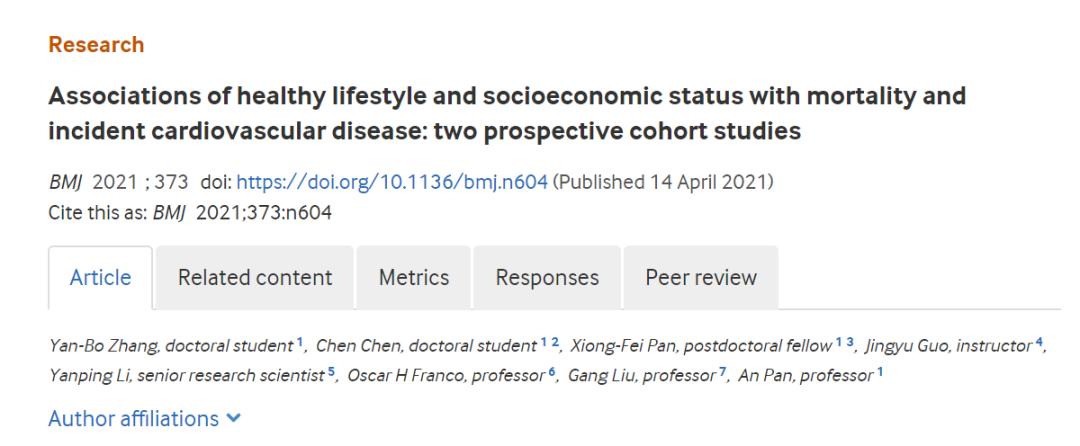Introduction
Socioeconomic status (SES) has been associated with differences in morbidity and mortality.1 Although most countries and regions have witnessed socioeconomic progress and rising standards of living in recent decades, the US and UK are the top two countries showing an increasing rate of wealth inequity among Organization for Economic Cooperation and Development countries.2 Moreover, the gap has also become more pronounced for socioeconomic inequity in survival—longevity has increased among Americans with middle and high income, whereas in poor Americans it has remained unchanged or even decreased in certain demographic groups.3 Similar trends are also observed in the UK.2 The impacts of these differences have been made more evident during the covid-19 pandemic, which has affected socially disadvantaged groups the most.4 Immediate efforts are therefore warranted to reduce socioeconomic inequities in health and to improve the resilience of populations.
Lifestyle factors are commonly viewed as mediators between SES and health and that healthy lifestyles might alleviate the socioeconomic inequities in health.5 Multiple studies have examined the contribution of an individual lifestyle factor or several in the association between SES and mortality or morbidity.6 However, important gaps remain. First, how much an overall lifestyle mediates the association between SES and health outcomes is debatable. Previous studies tended to use single variables (eg, income, wealth, occupation, education level) to represent individual level SES,6 which only partly reflected overall SES7; thus it is essential to construct a comprehensive SES variable comprising different aspects of SES. Besides, lifestyle factors are interrelated8 and few studies have built a healthy lifestyle score to reflect overall lifestyle and to evaluate its impact on the socioeconomic inequities in health. Second, limited research has been performed on the interaction and joint associations of SES and overall lifestyles with health outcomes. Third, it remains unclear whether the findings are consistent among subpopulations of different age, sex, and racial or ethnic groups.

We used data from the US National Health and Nutrition Examination Survey (US NHANES) and UK Biobank to evaluate the complex relations of lifestyles and SES with mortality and incident cardiovascular disease (CVD).









